It is essential to efficiently transfer information between different pages of your web application. Especially when dealing with user messages, storing and retrieving these messages via sessions can represent an effective solution. In this guide, you will receive a detailed overview of how to manage messages with sessions in PHP to create a more pleasant user experience.
Key Insights
- By using sessions, you can store and retrieve messages across different pages of your application.
- Resetting sessions after reading a message prevents it from being displayed multiple times.
- Implementing helper functions in a class improves the structure and maintainability of your code.
Step-by-Step Guide
To transport messages via session in your PHP application, follow this step-by-step guide:
Step 1: Create a Class for Messages
At the beginning, you should create a new class that handles setting, reading, and checking messages via sessions. This class helps you keep the code modular and clear.
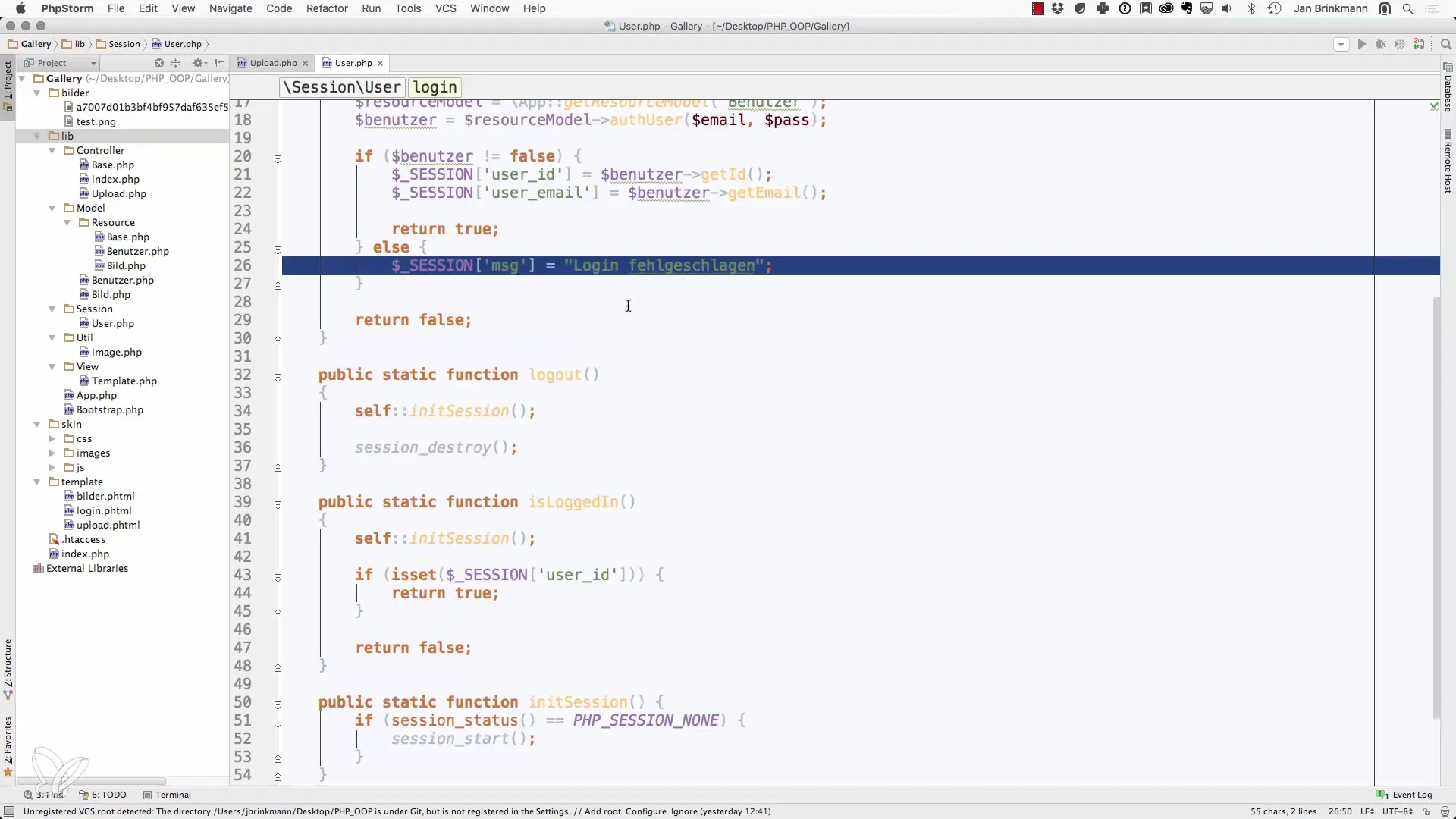
Create a class called Message, in which you implement the functions setMSG, readMSG, and hasMSG. Here you define the basic methods to handle messages.
Step 2: Set Message
In the setMSG method, you can store the message in the session. You need to specify the name of the session variable to save the message.
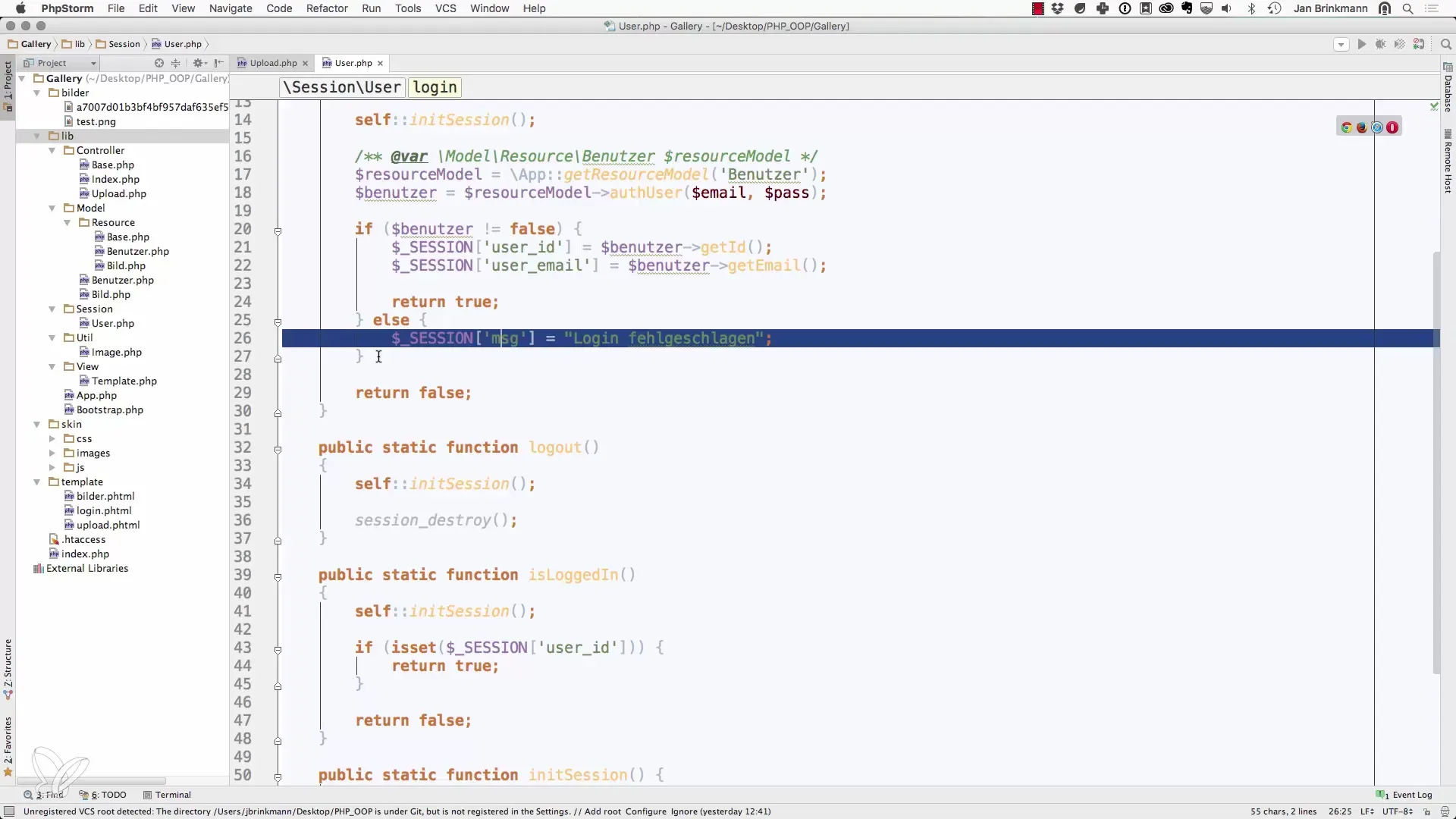
Here you use the namespace "Session" and store the message in a session variable.
Step 3: Read and Reset Message
Now comes the function that retrieves the stored message from the session while resetting the session at the same time. This ensures that the message is no longer available once it has been read.
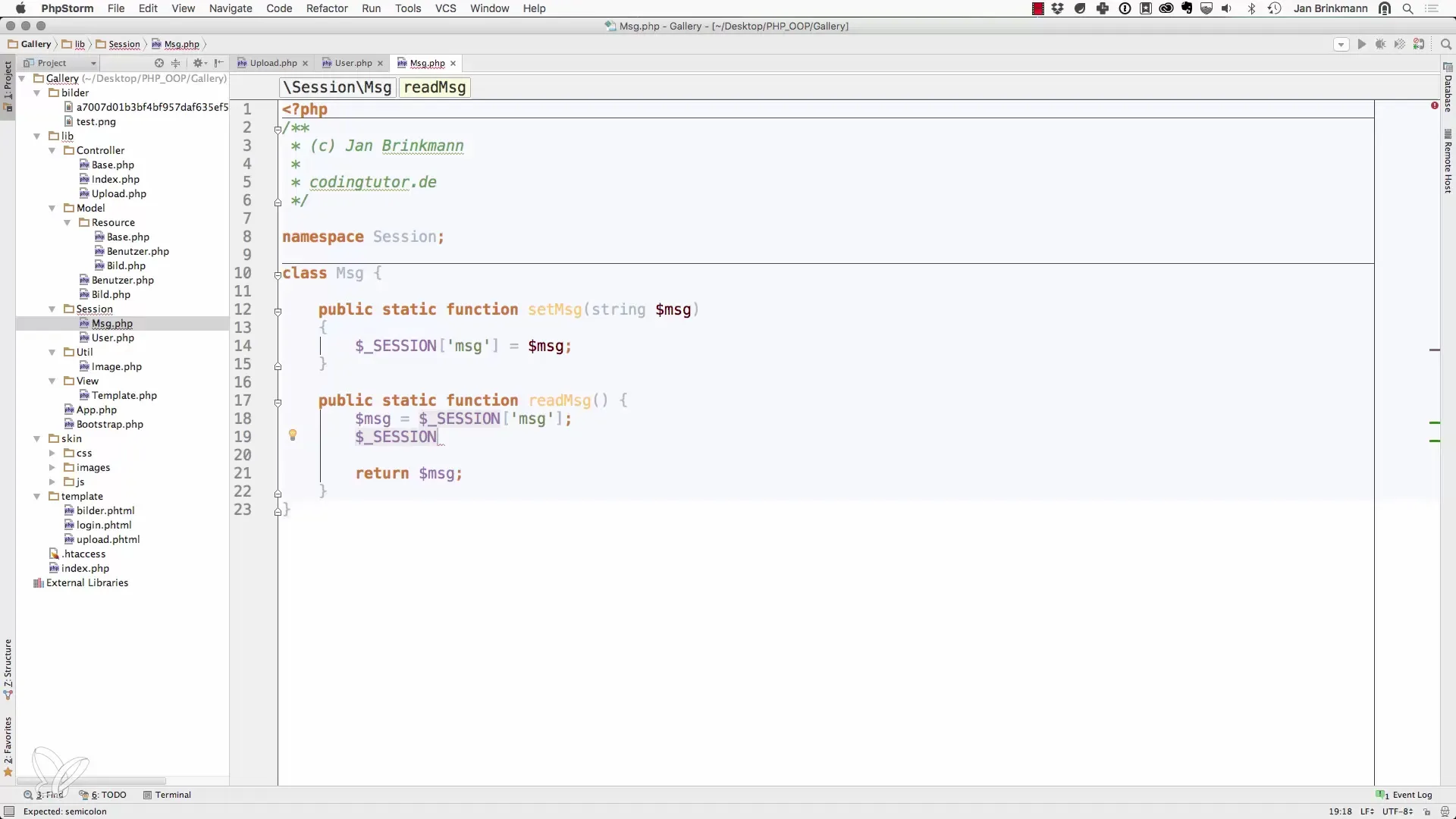
By using unset, you remove the message after retrieval, preventing duplicates on the next page load.
Step 4: Check for Existing Messages
To check if a message is present in the session, the method hasMSG is available. This function allows you to easily determine if a message exists before attempting to display it.
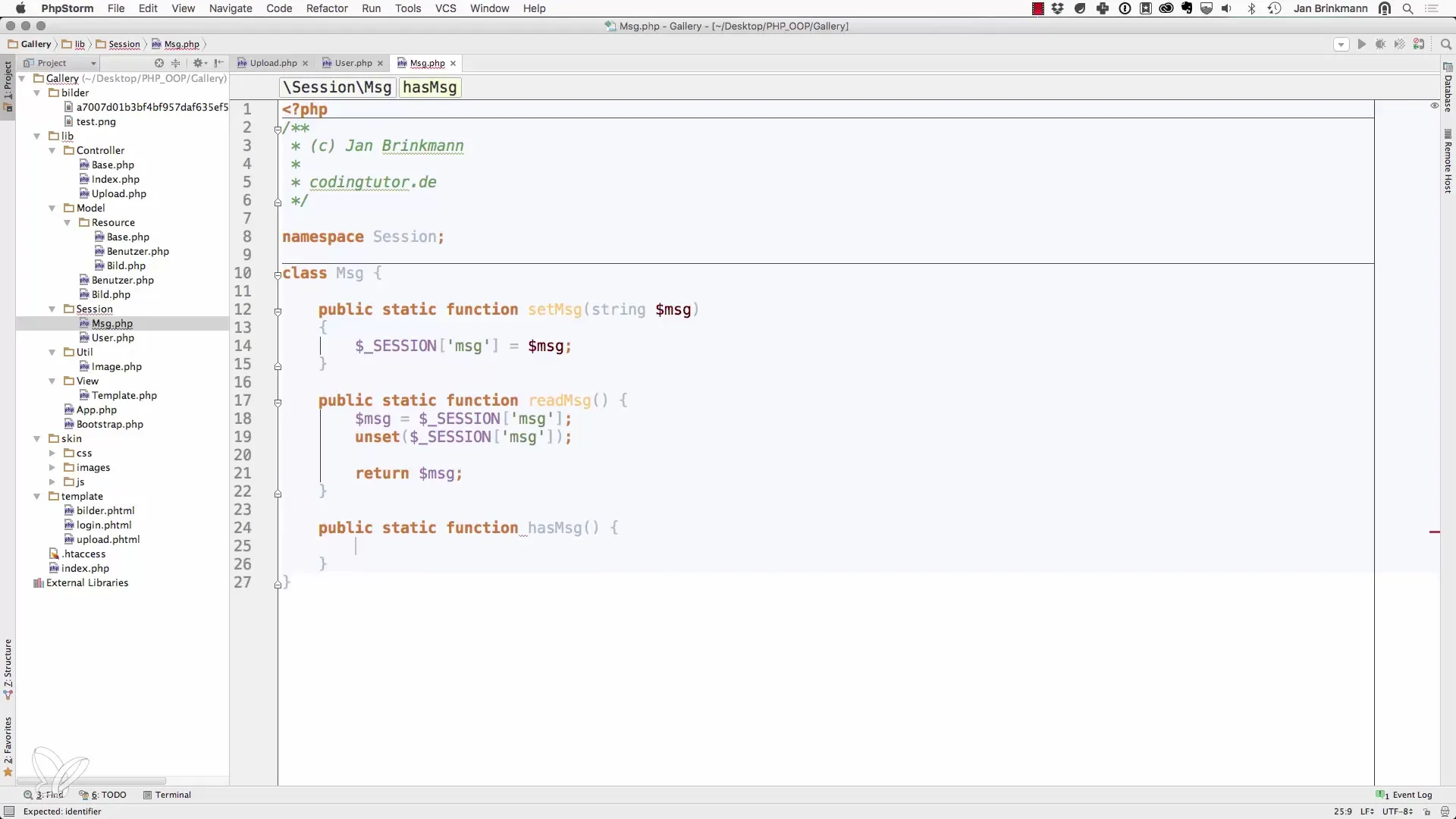
With this function, you can keep your template pages cleaner by only displaying the message when it actually exists.
Step 5: Integration into the Template
Without integration into your template, the message cannot be displayed. Therefore, the next step is to implement the output of the message.
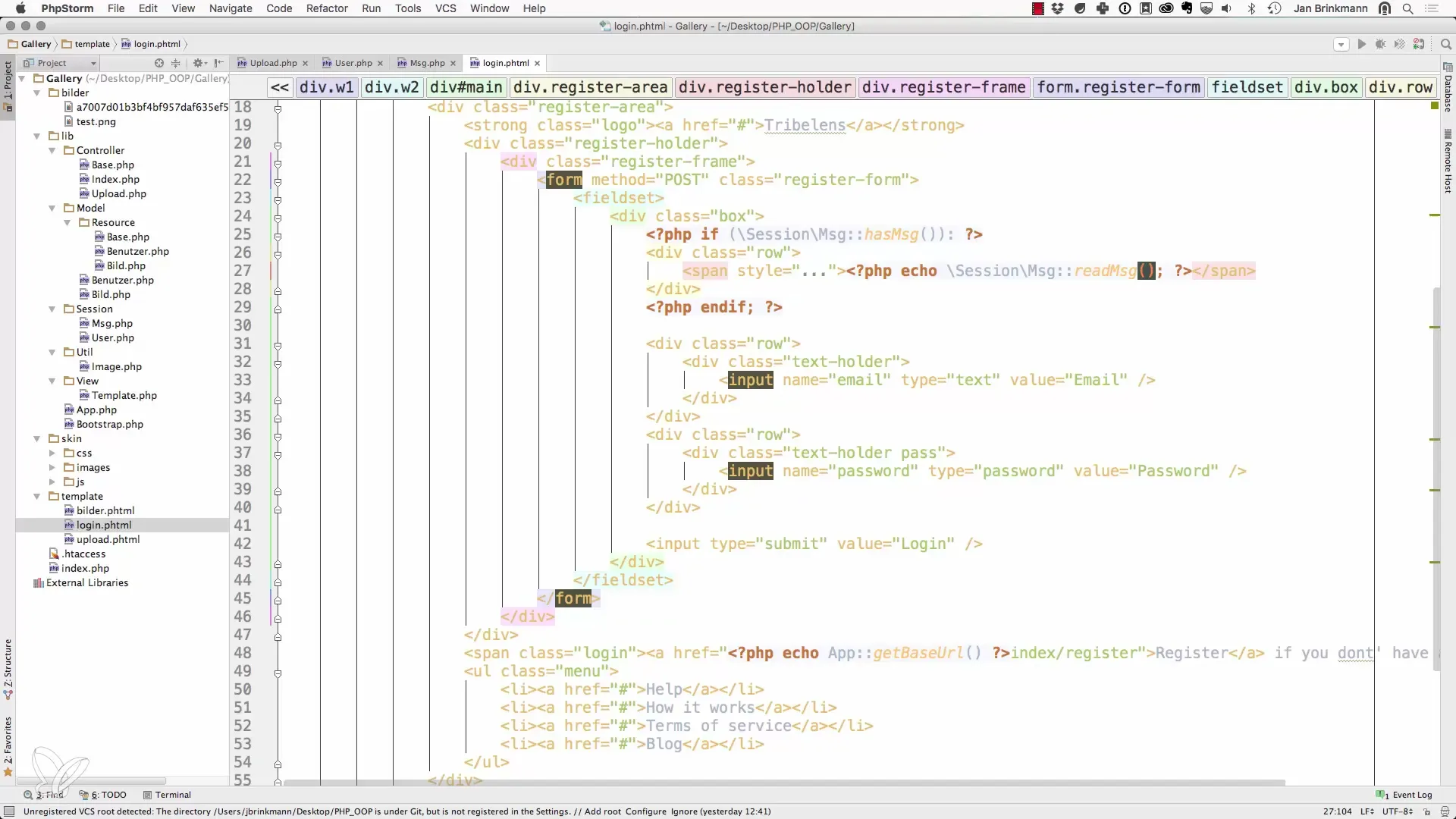
Insert this code into your template where user warnings or notifications should be displayed.
Step 6: Error Handling and User Notification
In the template implementation, you should also ensure that any errors that occur during login or user interaction are clearly displayed to the user.
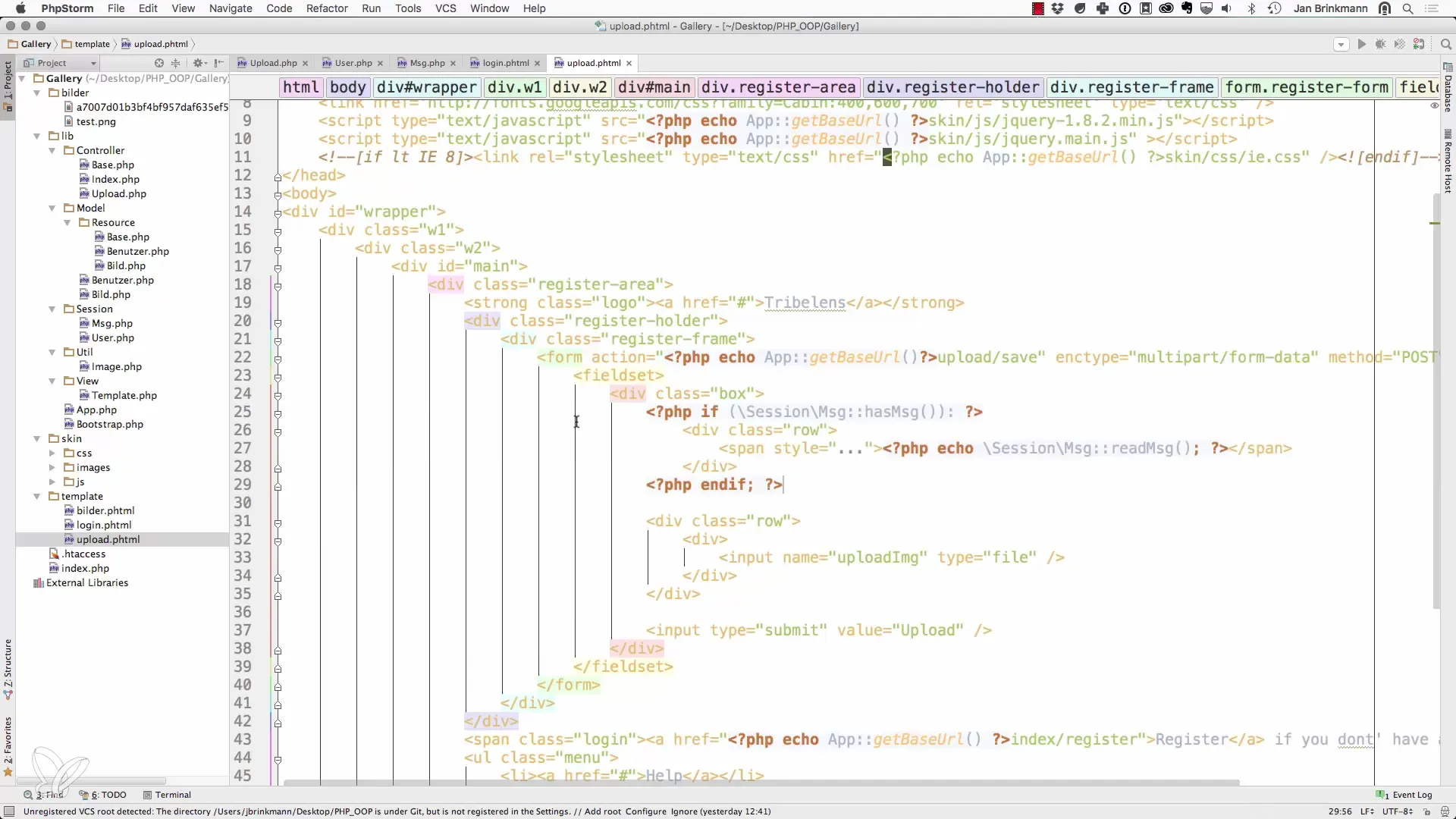
With the help of sessions, you can also create alternative templates for different actions to further enhance the user experience and minimize errors.
Summary – Transmitting Messages via Sessions in PHP
Using sessions to transmit messages in PHP can help you maintain clear communication between your application and users. With the steps described in this guide, you can develop a simple yet effective solution that simultaneously ensures clear structures in the code.
Frequently Asked Questions
How do I set a message in a session?Use the method setMSG($msg) with the desired content.
How do I read a message from the session?Use the method readMSG() to retrieve the message and simultaneously remove it from the session.
How can I check if a message exists?Call the method hasMSG() to query the status of the message.
What happens if I do not reset the message?The message remains in the session and is displayed on every page load until the session expires or the message is manually deleted.


